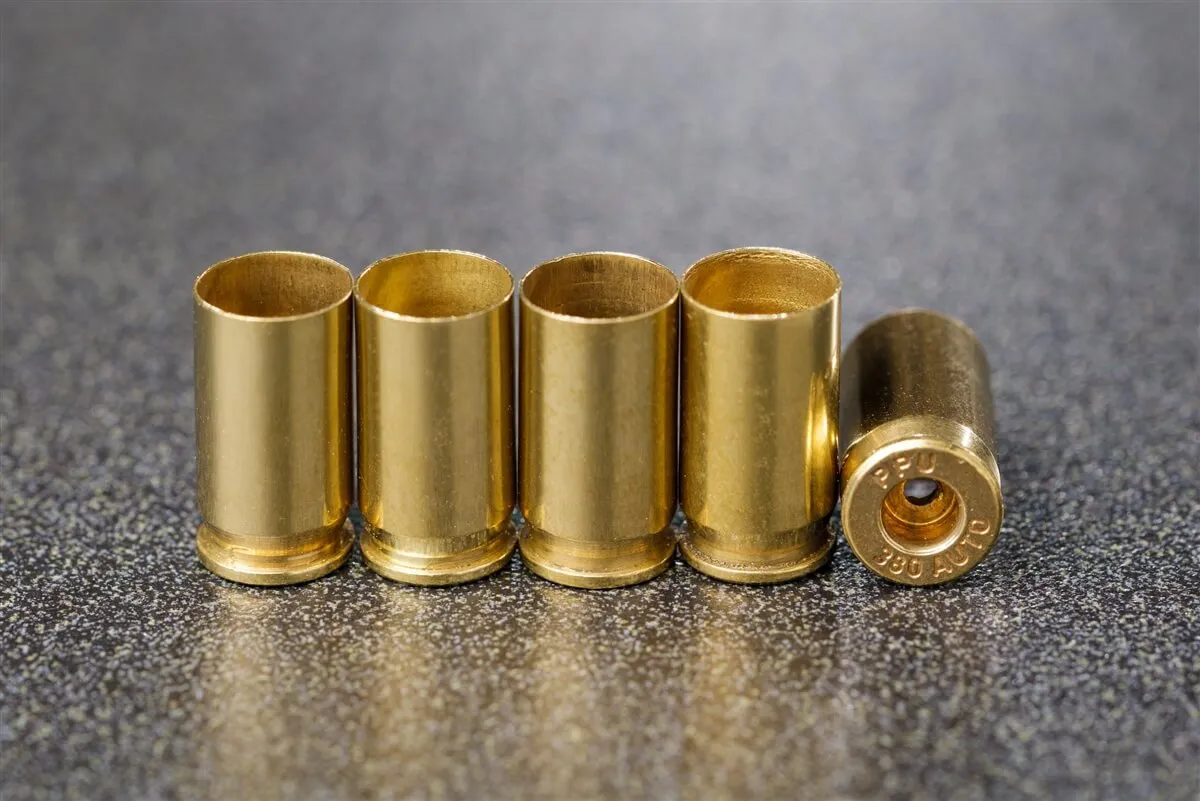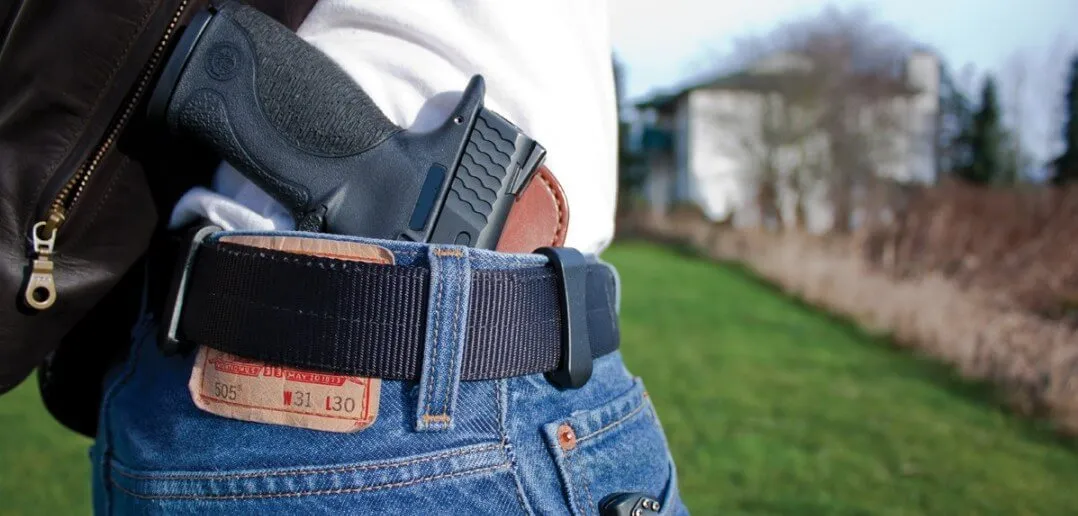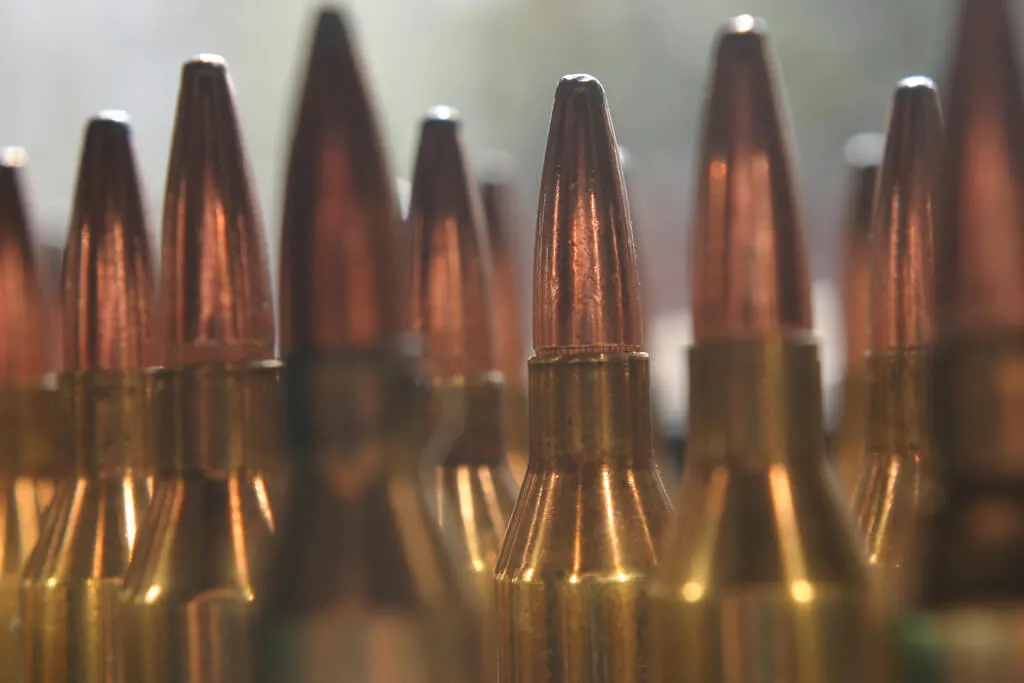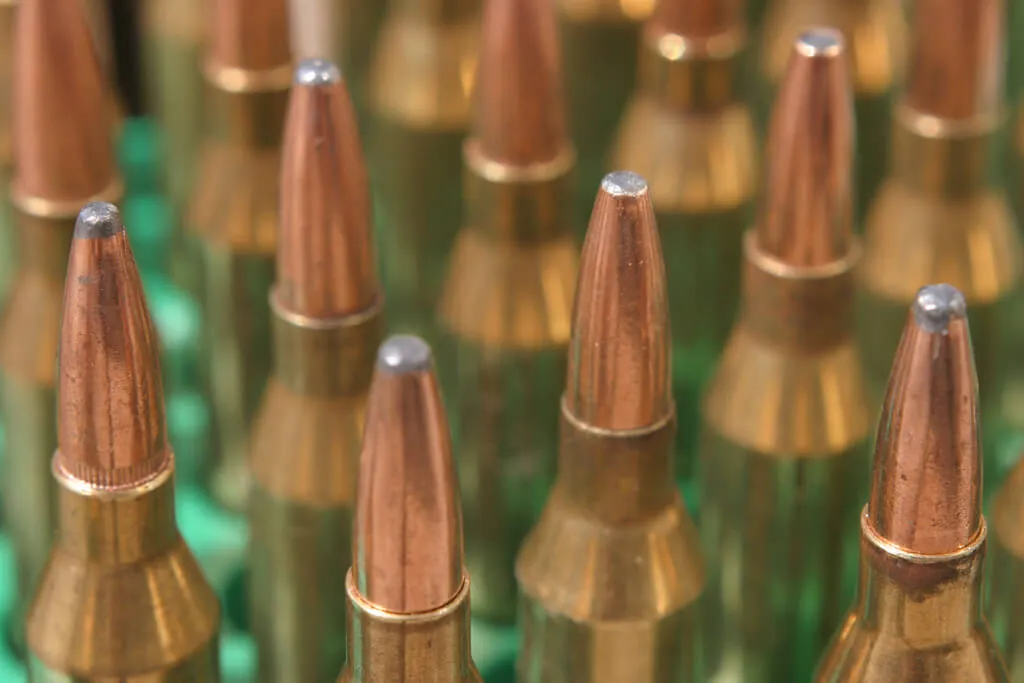In 1963, Winchester introduced the .300 Winchester Magnum, which featured a longer case than the .338, as long as what could be housed in a Winchester long action to achieve optimum velocities. The shoulder was moved forward to maximize powder capacity that created a short neck.
Factory ammunition for the .300 Win Mag is loaded to a very short overall length to allow the cartridge to be utilized in various types of rifles. The cartridge design had issues such as powder cramping and an undesirably long bullet jump / free bore. But with hand loaded ammunition in long magazine rifles such as the Winchester M70, the .300 Winchester Magnum showed its strength.
The .300 Winchester Magnum was a guaranteed success because the market demanded a readily available .300 magnum cartridge from a US-based manufacturer. The .300 Win Mag was especially popular with 1000 yard competitive shooters for decreased wind drift in comparison to traditional cartridges. The .300 is currently employed by various NATO allies as a sniper rifle cartridge and by law enforcement agencies. As a hunting cartridge, the .300 Win Mag is still popular worldwide as a functional cartridge and classic cartridge.
The .300 Winchester Magnum is effective for light, medium, and large-medium game. As with all of the .30 caliber magnums, success is in matching bullet weights and construction combined with optimum accuracy. The strengths of the .300 are in its ability to produce fast killing on body weights greater than 90kg.
Loaded with 150 grain bullets, the .300 Winchester Magnum can be utilized for light framed game out at considerable ranges. With factory ammunition the .300 Winchester Magnum often does some of its best work with 150 grain offerings. For light framed deer, 150 grain factory loads produce spectacular killing.
Loaded with 165-168 grain bullets, the .300 Winchester Magnum is convincing for medium to larger bodied deer species. Most projectiles of this weight tend to work best on body weights of between 90 and 150kg (200-330lb. Loaded with 180 grain bullets, the .300 Win Mag excels on large body weights between 90 and 320kg (200-700lb). With 200 to 220 grain bullets, the .300 Win Mag can be put to use on large, heavy bodied game. Exceptionally deep penetration can be achieved with select bullet designs however wound channels through heavy animals are not as wide or as fast bleeding as can be achieved with a wider bore. When using the .300 on large game, shot placement is the key. On bovines, head or neck shots ensure the fastest possible kills. However, such shots should only be taken with a rifle of proven accuracy at close to moderate ranges.
Winchester’s factory loads for the .300 had a 150-grain bullet at 3400fps and a 180-grain bullet at 3070fps, and both loads have been reduced. Most manufacturers presently advertise velocities of around 3290fps with 150 grain bullets and 2960fps with 180 grain bullets. In sporting rifles with 24-26” barrels most 150 grain loadings achieve realistic velocities of around 3250fps while 180 grain loads achieve around 2880fps.
Having a .300 Winchester Magnum in the field is ideal for bush work and long range hunting of light through to large medium game. That said, bullet weights must be matched to game weights and bullet construction matched to hunting environment to achieve optimum results.
The hunter must also be able to shoot MOA or less to utilize this cartridge’s potential, whether the .300 is to be used at 250 yards or 1250 yards. The .300 Winchester Magnum offers great performance to the shooter who takes note of the detail.
BONUS OFFER: Get your free shooting range targets to print at home!
Hand Loading
The standard twist rate for the .300 Winchester Magnum is 1:10, ideal for heavy bullets but often producing acceptable results with 150 grain bullets at mild muzzle velocities of 3250 through to 3320fps as a typical upper limit for accuracy.
When hand loading the .300 Winchester Magnum, the rifle’s magazine length influenced the ease of operations. There are still many manufacturers chambering the .300 Win Mag in rifles that feature short magazines that can produce less than desirable and sometimes frustrating performance with hand loaded long for caliber projectiles. The magazine’s internal length of a minimum of 90mm provides optimal results. In short magazine rifles, powder charge rate experimentation is a key factor towards developing accurate hand loads.
It’s not easy to seat 150-grain bullets out of the .300 Winchester’s short neck for the least bullet jump. Any cartridge’s length that is beyond 86mm runs the risk of losing accuracy through bullet to bore misalignment. A long bullet jump with 150 grain bullets is to be expected, requiring attention to both powder charge rate experimentation and optimal seating depths for concentricity.
Like all belted magnums, it is important to neck size the .300 Win magnum for optimum concentricity. This head spaces the case at the shoulder and the belt at the same time, rather than the belt, at the rear of the cartridge. If cases are reduced in size too heavily, accuracy can be effected.
In minimum dimension chambers, full length sizing may be required to avoid difficulty chambering ammunition. In these instances, the chamber is so tight, that head spacing will still occur at both the belt and shoulder, regardless of the full length resizing operations.
To load for full power, the most flexible powders in the .300 Win Mag include the H4831 and ADI2213sc range. Slower powders such as H1000/ADI2217 and IMR7828 work well with heavy 200 to 220 grain bullets in long magazine rifles. This burn rate can also be used for improving the bulk density of reduced loads, allowing the hand loader to duplicate .308 Winchester velocities.
The .300 Win Mag does tend to display nonlinear results. For example, in many rifles, it is possible to achieve velocities of 2950-3000fps with 200 grain bullets. These discrepancies can become even larger with the soft jacketed, low pressure inducing 208 grain A-Max. In essence, the .300 Winchester Magnum does very well with heavy bullets. When testing full power loads, it is important for the shooter to have a good technique to tame recoil and ensure the rifle has a sound bedding platform to avoid loss of accuracy at high muzzle velocities.














